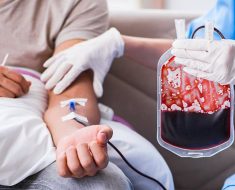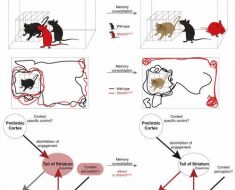As a journalist, Maureen Taylor remembers covering the case of Sue Rodriguez, who was denied assisted suicide through a Supreme Court decision in 1993. At the time, Taylor couldn’t have imagined that 10 years later she’d be surreptitiously investigating a way to help her own husband, Dr. Donald Low, take his life.
After a terminal cancer diagnosis in 2013, the University of Toronto professor and infectious disease specialist longed for control over how and when he would die. Frustrated at not having that choice, Low made a compelling case for the right to assisted dying in a widely viewed video, released after his death.
Taylor – who had already transitioned from award-winning health journalist to physician assistant – took on yet another vocation: assisted dying advocate. She co-chaired an expert panel making recommendations to government and has spoken out publicly for changes in legislation.
She recently joined U of T physicians, educators and researchers at a Faculty of Medicine event called UofTMedTalks, where they delved into how end-of-life care is changing in the era of medical assistance in dying.
“It’s been almost two years since Canadians have had the right to discuss assisted dying with a health-care provider, but how is the system working?” Taylor asks. “How easy is it to navigate, for patients and for health-care providers?”
It’s complicated, was the resounding consensus.
As medical assistance in dying has shifted from controversial debate to constitutional right, there’s a clear need for more research and education to address gaps in knowledge and access, especially for the broader field of palliative care, the speakers said.
One of the big surprises was the unease among many palliative care specialists to be involved in medical assistance in dying. Having worked hard to counter the misconception that palliative care hastens death, many of these specialists found this new function at odds with their practice.
“Medical assistance in dying is 100 per cent palliative care,” says Jeff Myers, an associate professor in U of T’s Faculty of Medicine, “and at the exact same moment it’s 180 degrees opposite of palliative care.”
Myers – the W. Gifford-Jones Professor in Pain Control and Palliative Care, head of the division of palliative care in the department of family and community medicine and site lead at Sinai Health System’s Bridgepoint Palliative Care Unit – is focused on reconciling this contrast.
“Now in Canada, the end-of-life part of palliative care is inextricably linked with medical assistance in dying,” he says. He shared his own recent experiences providing the procedure, and reflected on the hope and relief it offered patients.
For Sandy Buchman, an associate professor in the department of family and community medicine, it was that relief from suffering that convinced him to provide medical assistance in dying. As a family and palliative care physician with the Sinai Health System’s Temmy Latner Centre for Palliative Care, Buchman cares for patients at end of life, in their homes.
Buchman didn’t set out to provide medical assistance in dying – or even palliative care before that. As a family physician, it was patients with HIV/AIDS who introduced him to the field of palliative care. And more recently, as he was grappling with the decision of whether he would provide medical assistance in dying when it became legal, a patient and U of T professor and cardiologist who suffered from advanced Parkinson’s asked if Buchman would help.
“Just the hope that MAiD [medical assistance in dying] offered him was incredible to me,” he says. “I went into medicine to relieve suffering.”
Buchman came to consider medical assistance in dying as consistent with these values.
It’s not the only way to relieve suffering, however, stresses Buchman. When patients are given other options to manage pain and reduce suffering – core goals of palliative care medicine – many will no longer request medical assistance in dying.
This is one of the frustrations in the palliative care community: With so much attention on medical assistance in dying, some feel that unmet needs in palliative medicine continue to be overlooked.
“MAiD is only a choice if there’s another option,” says Myers, who worries that not enough Canadians have access to palliative care. He hopes the spotlight shining on medical assistance in dying will help illuminate the broader field of end-of-life care.
Already, researchers and palliative care specialists like Professor Camilla Zimmermann have been transforming our understanding of the field. A professor in the departments of medicine and psychiatry and palliative care physician and senior scientist at the University Health Network’s Princess Margaret Cancer Centre, Zimmermann holds the Rose Family Chair in Palliative Medicine and Supportive Care. She has shown how early access to palliative care – starting at the time of diagnosis – leads to greater quality of life.
While she recognizes there wouldn’t be enough palliative care specialists for every patient in need, she believes education is key. She says we should be training all medical students and many specialists in providing some level of palliative care.
“If you’re a specialist in lung cancer,” she gives as an example, “you should really know how to treat shortness of breath.”
While much remains to be done, there’s been major progress, in both palliative medicine education and in medical assistance in dying. Just last year, Zimmermann and Myers have helped launch a new Royal College subspecialty training program in palliative medicine at U of T. And researchers and educators have been developing guidelines and best practices about medical assistance in dying.
“It is in complex areas like this that knowledge, expertise and passion, become so essential,” says Faculty of Medicine’s Executive Director of Advancement Darina Landa, who hosted the event.
Source: Read Full Article





